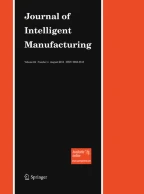Abstract
To design an efficient product family, designers have to anticipate the production process and, more generally, the supply chain costs. But this is a difficult problem, and designers often propose a solution which is subsequently evaluated in terms of logistical costs. This paper presents a design problem in which the product and the supply chain design are considered at the same time. It consists in selecting a set of modules that will be manufactured at distant facilities and then shipped to a plant close to the market for final, customized assembly under time constraints. The goal is to obtain the bill of materials for all the items in the product family, each of which is made up of a set of modules, and specifying the location where these modules will be built, in order to minimize the total production costs for the supply chain. The objective of the study is to analyze both, for small instances, the impact of the costs (fixed and variable) on the optimal solutions, and to compare an integrated approach minimizing the total cost in one model with a two-phases approach in which the decisions relating to the design of the products and the allocation of modules to distant sites are made separately.
Similar content being viewed by others
References
Agard B., Penz B. (2009) A simulated annealing method based on a clustering approach to determine bills of materials for a large product family. International Journal of Production Economics 117(2): 389–401
Agard, B., Cheung, B., & Da Cunha, C. (2006). Selection of a module stock composition using genetic algorithm. In 12th IFAC symposium on information control problems in manufacturing—INCOM 2006, Saint-Etienne, France.
Amilhastre J., Fargier H., Marquis P. (2002) Consistency restoration and explanations in dynamic CSPs-application to configuration. Artificial Intelligence 135(1–2): 199–234
Bacuta C. (2007) A unified approach for Uzawa algorithms. SIAM-Journal-on-Numerical-Analysis 45(5): 2228–2258
Briant O., Naddef D. (2004) The optimal diversity management problem. Operation Research 52(4): 515–526
Da Cunha, C. (2004). Définition et gestion de produits semi-finis en vue d’une production de type assemblage à la commande. PhD thesis, INP Grenoble.
Da Cunha C., Agard B., Kusiak A. (2007) Design for cost : Module-based mass customization. IEEE Transactions on Automation Science and Engineering 4(3): 350–359
Daskin M.S. (1995) Network and discrete location, models, algorithms and applications. Wiley, New York
Garey M.R., Johnson D.S. (1979) Computers and intractability, a guide to the theory of NP-completeness. W.H. Freeman and Company, New York
Hale, T. (2005). Trevor hale’s location science references-available at the address. Technical report, http://www.ent.ohiou.edu/~thale/thlocation.html.
Huang C.C., Kusiak A. (1998) Modularity in design of products and systems. IEEE Transactions on Systems, Man and Cybernetics, Part A: Systems and Humans 28(1): 66–77
Huei-Chuen H., Rongheng L. (2008) A k-product uncapacitated facility location problem. European Journal of Operational Research 185: 552–562
Jaynes E.T. (1957) Information theory and statistical mechanics. Physical-Review 106(4): 620–630
Jaynes E.T. (1982) On the rationale of maximum-entropy methods. Proceedings-of-the-IEEE 70(9): 939–9524
Lamothe J., Hadj-Hamou K., Aldanondo M. (2006) An optimization model for selecting a product family and designing its supply chain. European Journal of Operational Research 169(1): 1030–1047
Pine B.J. II (1993) Mass customization: The new frontier in business competition. Harvard Business School Press, Boston
Xu X., Fang S.L., Gu X.J. (2007) Mass customization and variety. Computer Integrated Manufacturing systems 13(7): 1330–1335
Yang, Y., Wang, J. X., & Sang, S. J. (2007). Research on product family design for mass customization. Modular Machine Tool and Automatic Manufacturing Technique, (10), 9–13.
Zhiuong, W., & Fanqhua, N. (2007). Study on supply chain management for product family in mass customization. In IEEE international conference on automation and logistics (pp. 1515–1519).
Author information
Authors and Affiliations
Corresponding author
Rights and permissions
About this article
Cite this article
Khalaf, R.E.H., Agard, B. & Penz, B. An experimental study for the selection of modules and facilities in a mass customization context. J Intell Manuf 21, 703–716 (2010). https://doi.org/10.1007/s10845-009-0247-0
Received:
Accepted:
Published:
Issue Date:
DOI: https://doi.org/10.1007/s10845-009-0247-0
